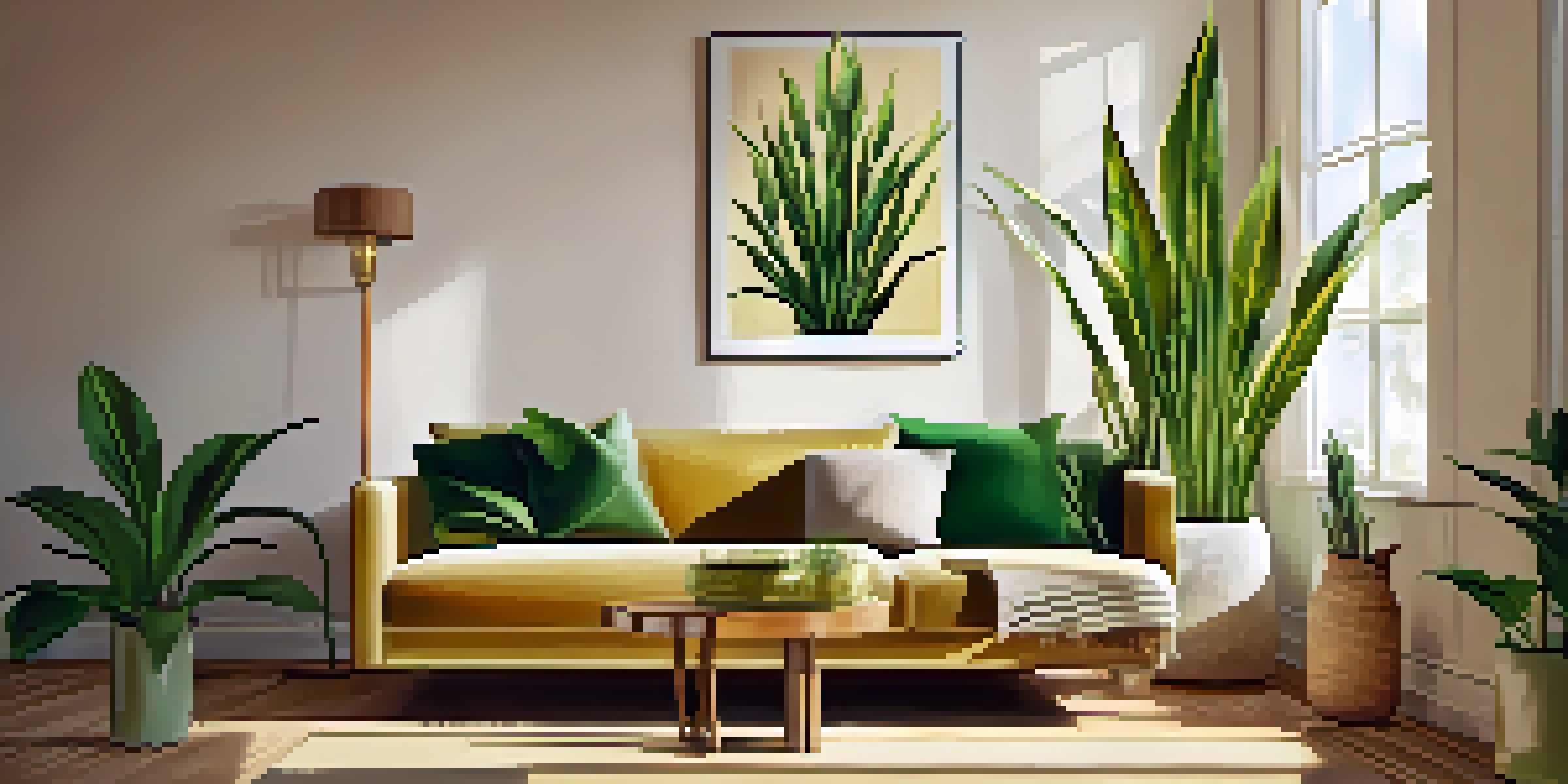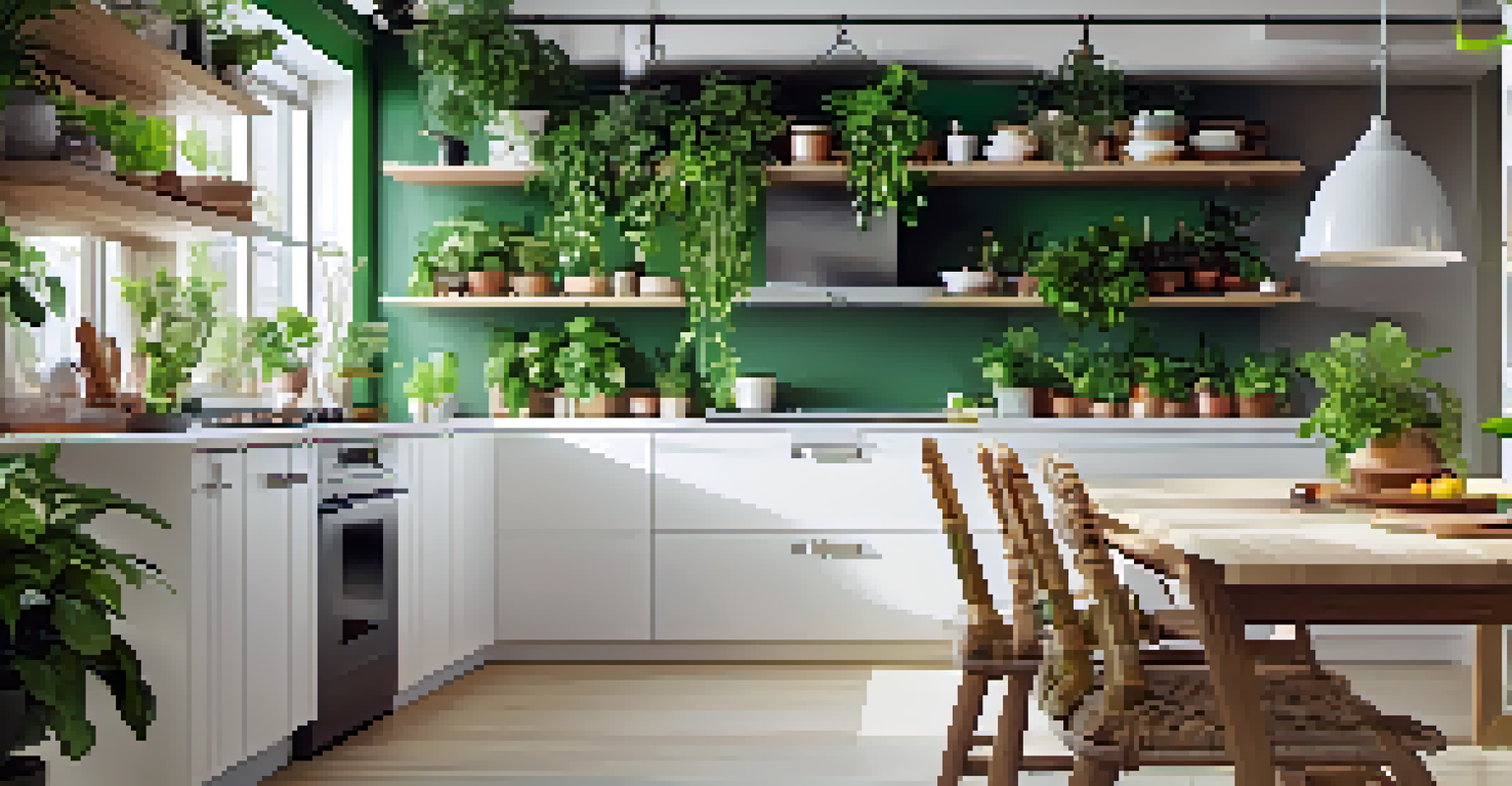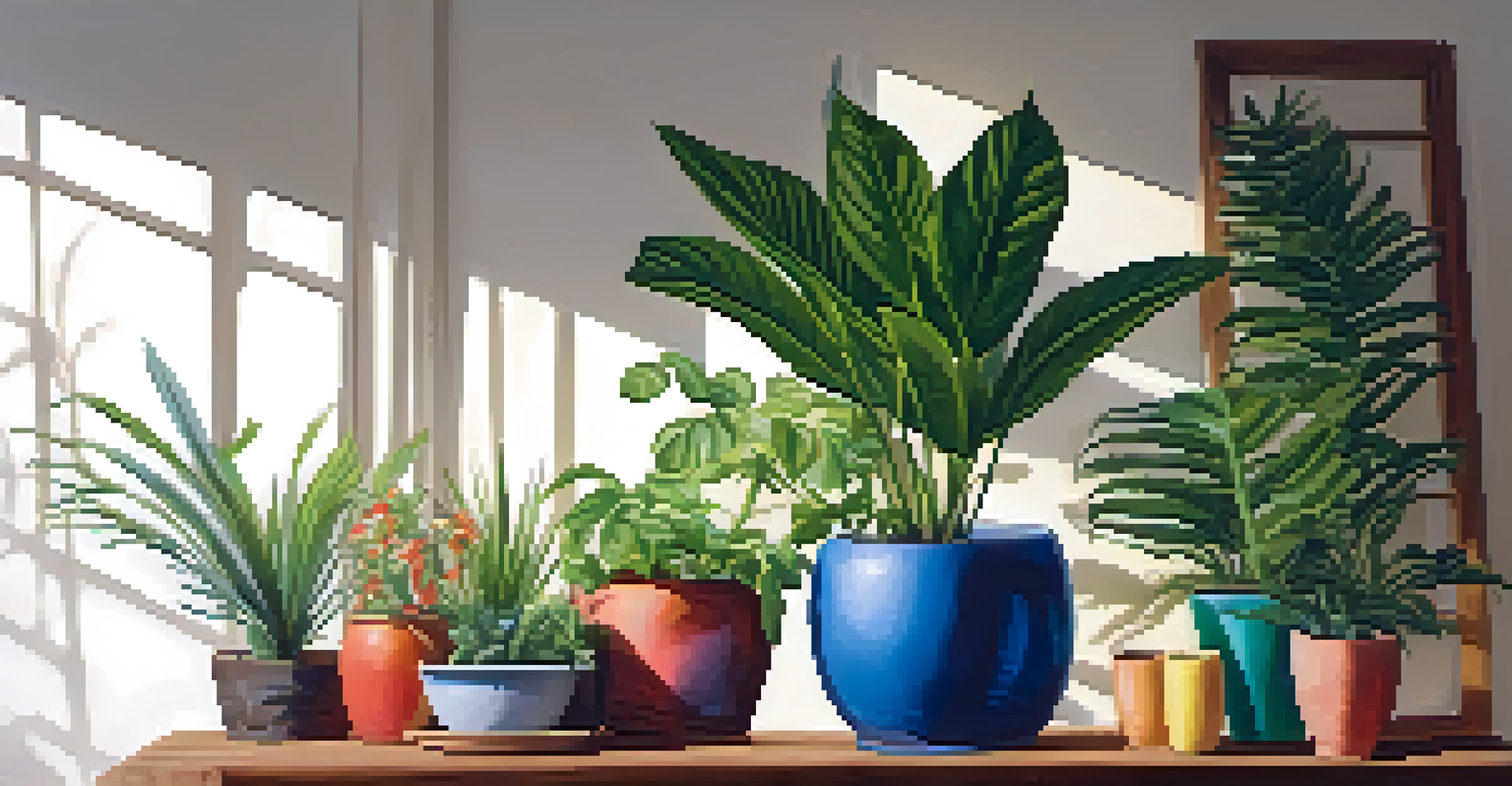Tropical Plants that Thrive in Low Light Conditions

Understanding Low Light Conditions for Plants
Low light conditions in homes can be a challenge for many plant lovers. Typically, this refers to spaces that receive indirect sunlight or are away from windows. Understanding how these conditions affect plant growth is vital for choosing the right types of plants.
Plants are like people; they need to be nurtured and cared for to thrive in any environment.
Plants that thrive in low light have adapted over time to survive with minimal sunlight. Their leaves are often larger and darker, enabling them to absorb more light. This adaptation is crucial for their survival in dense jungles where sunlight is filtered through layers of foliage.
When selecting plants for low light areas, it's essential to consider their overall health and growth potential. By choosing species that naturally thrive in these conditions, you can ensure that your indoor garden remains vibrant and lush, even in dimly lit corners.
The Benefits of Low Light Tropical Plants
Tropical plants that thrive in low light not only enhance the beauty of your space but also offer numerous health benefits. They can improve indoor air quality by filtering out toxins and increasing humidity, which is especially useful in dry environments.

Moreover, these plants can help create a calming atmosphere in your home. Their lush greenery can reduce stress and promote relaxation, making them perfect companions for your living room or bedroom. Imagine coming home to a serene space filled with natural beauty!
Choose Plants for Low Light
Selecting plants like Snake Plants and ZZ Plants ensures your indoor garden thrives in dim conditions.
Additionally, low light tropical plants require less maintenance compared to their high-light counterparts. This makes them ideal for busy individuals or those new to gardening, allowing you to enjoy the beauty of nature without the constant upkeep.
Top Tropical Plants for Low Light Spaces
One of the best options for low light is the Snake Plant, also known as Sansevieria. Its tall, sword-like leaves can tolerate neglect and thrive in low light, making it a favorite among both novice and experienced plant owners.
The love of gardening is a seed once sown that never dies.
Another excellent choice is the ZZ Plant (Zamioculcas zamiifolia), known for its glossy, dark green leaves. This resilient plant can go long periods without water and still look stunning, making it perfect for busy lifestyles.
Lastly, consider the Pothos plant, which can adapt to various light conditions. Its trailing vines can be trained to grow along shelves or hang beautifully in a macramé hanger, adding a touch of greenery to any space.
Caring for Low Light Tropical Plants
While these plants are forgiving, they still require some care to thrive. Water them sparingly; overwatering is a common mistake that can lead to root rot. Allow the soil to dry out between waterings to maintain healthy roots.
Dust can accumulate on leaves, blocking sunlight absorption, so it's a good idea to wipe them down occasionally. This simple care routine can keep your plants looking fresh and vibrant, enhancing their ability to photosynthesize.
Benefits of Low Light Plants
Low light tropical plants improve air quality and create a calming atmosphere in your home.
Additionally, while they thrive in low light, rotating your plants occasionally can help them grow evenly. This small adjustment can make a significant difference in their overall appearance and health.
Common Myths About Low Light Plants
A common myth is that low light plants don't need any sunlight at all. While they can survive in lower light conditions, they still need some indirect light to thrive and grow properly. Even a few hours of indirect sunlight a week can make a big difference.
Another misconception is that all plants are the same when it comes to light needs. In reality, different species have unique light requirements, and understanding these differences is key to successful indoor gardening.
Additionally, many believe that low light plants are less attractive or less vibrant. However, the truth is that many tropical plants are stunning, with lush foliage and unique shapes that can add character to any room.
Decorating with Low Light Tropical Plants
Incorporating low light tropical plants into your home decor can be both stylish and practical. Use tall plants like the Snake Plant to fill empty corners, creating height and interest in the room. Their unique shapes can serve as natural sculptures that draw the eye.
Hanging plants like Pothos can add a touch of whimsy to your space. Imagine cascading green vines from shelves or hanging baskets, infusing your home with life and color. This creative use of space can make even the smallest areas feel more inviting.
Care Tips for Low Light Plants
Regularly dust leaves and water sparingly to maintain the health and vibrancy of your low light plants.
Don't forget about grouping plants together for a lush, tropical feel. Combining different varieties can create an eye-catching display that brings warmth and vibrancy to any room. Just be sure to consider their individual care needs for optimal growth.
Where to Find Low Light Tropical Plants
Finding the right low light tropical plants is easier than you might think. Many local nurseries and garden centers carry a variety of these species, often with knowledgeable staff who can provide care tips. Taking a stroll through your local plant shop can be a delightful experience!
Online retailers also offer a vast selection of low light plants, often with home delivery options. This convenience allows you to browse and discover rare varieties that may not be available locally, making it a fun way to expand your indoor jungle.

Lastly, consider checking out local plant swaps or community groups. These can be great places to exchange plants with fellow enthusiasts, allowing you to diversify your collection while making new friends in the gardening community.